![[ACLU Execution Watch
Counter]](http://www.aclu.org/graphics/dpcounter.gif)
![]() New!
since April, 2020 - Ronelle Delmont's YOU TUBE LKH Channel
New!
since April, 2020 - Ronelle Delmont's YOU TUBE LKH Channel
![]() Lindbergh
Trial's Courthouse Restored
Lindbergh
Trial's Courthouse Restored
![]() Guilty, Sentenced to Death for Murder of Lindbergh Baby Feb 18, 1935
Guilty, Sentenced to Death for Murder of Lindbergh Baby Feb 18, 1935
![]() Various
Things Done by the Prosecution to Hinder and Hold Up the Defense
Various
Things Done by the Prosecution to Hinder and Hold Up the Defense
by C Lloyd Fisher 1935 (pdf)
![]() The
Hallam Report - 1935 -1936
The
Hallam Report - 1935 -1936
by Judge W Dennis Duggan, JFC
reprinted from The Albany County Bar Association Newsletter
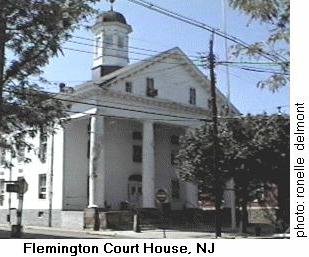
On September 26, 1934, Hauptmann was indicted by the Supreme Court in Bronx County, New York, for extortion. On October 8, 1934, in Hunterdon County, New Jersey, he was indicted for murder. On the 19th, Hauptmann was taken to the Hunterdon County Jail, Flemington, New Jersey, where he awaited trial. The trial began January 2, 1935, in Flemington, New Jersey and lasted six weeks.
Media coverage was greater than any previous trial.
Journalist and social critic, H.L. Mencken, called the trial "the biggest story since the Resurrection."
"Richly dressed sophisticated women and well-tailored men vied for seats in court. The small town became an inexhaustible source of entertainment, and the man accused of the heinous crime ... became the center of a media circus, with endless possibilities for news stories." - Paula Fass, historian
Citizens found the trial very entertaining. The sheriff signed autographs. Entertainers like Jack Dempsey and Ginger Rogers sat as spectators. Souvenirs were even sold during the trial. One could easily hear the noisy crowd of people inside the courtroom, with cameras rolling and flashes popping continuously.
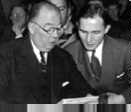 Ed
"Death House" Reilly , Hauptmann's defense attorney, created stationary which had a red
"kidnap" ladder in the margin with "The Lindbergh - Hauptmann
Trial -- Chief Defense Counsel" appearing at the top. He was seen
each day with another prostitute, pretending to be a stenographer, and he was
also quite often drunk. He gave no more than 40 minutes of his time to his
client during the entire trial.
Ed
"Death House" Reilly , Hauptmann's defense attorney, created stationary which had a red
"kidnap" ladder in the margin with "The Lindbergh - Hauptmann
Trial -- Chief Defense Counsel" appearing at the top. He was seen
each day with another prostitute, pretending to be a stenographer, and he was
also quite often drunk. He gave no more than 40 minutes of his time to his
client during the entire trial.
Witnesses for the trial were told that Hauptmann was guilty before they even went on the witness stand. Evidence which would have cleared Hauptmann was suppressed. Dr. Condon, the person who met the kidnaper twice, first believed that Hauptmann was the wrong man. After being pressured, however, he changed his opinion.
Because Hauptmann was German-born, anti-German feelings spread through the country. The prosecutor, David Wilentz told jurors that no American would kill a baby, increasing the country's fear of immigrants in general.
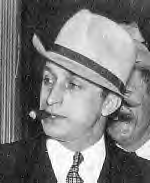 Prosecutors
demanded the death sentence, however, they were not sure how to go about getting that
result. Hauptmann was not actually executed for the "kidnapping" of the Lindbergh baby. Kidnapping was not a capital offense until after the trial, when the "Lindbergh Law" was created. Since prosecutors could not show that Hauptmann had an intent to kill and since evidence made the child's death seem as if it was accidental during the crime, they could not convict him of murder in the usual manner.
Prosecutors
demanded the death sentence, however, they were not sure how to go about getting that
result. Hauptmann was not actually executed for the "kidnapping" of the Lindbergh baby. Kidnapping was not a capital offense until after the trial, when the "Lindbergh Law" was created. Since prosecutors could not show that Hauptmann had an intent to kill and since evidence made the child's death seem as if it was accidental during the crime, they could not convict him of murder in the usual manner.
The prosecution speculated about charging Hauptmann with felony murder since it allows for the conviction of a person for murder, even if the killing accidentally occurred while committing a felony. However, kidnapping was not a felony at the time. Charging Hauptmann with kidnapping could only get him a prison term if convicted. But, a loop-hole was found. It was a felony to break into the Lindbergh home and steal the child's sleeping suit. Stealing was a felony. It just happened that the child was wearing the sleepingsuit at the time the felony was committed.
NY Times April, 2003
Two relics of broadcast history, long thought to have vanished, have been discovered, the Museum of Television and Radio announced yesterday. One is a series of daily commentaries on the 1935 Lindbergh kidnapping trial by the defense lawyer (and later judge) Samuel Leibowitz. The broadcasts are described as the only known radio coverage of that "trial of the century." The other relic is a recording of "Twelve Angry Men," the landmark Reginald Rose television drama said to have been unseen in its entirety since its broadcast in 1954 on CBS's "Studio One." Both had been among the museum's most coveted "lost programs" since it opened in 1976. The two recordings, in the possession of the Leibowitz children, were brought to the attention of the museum by Joseph Consentino, who is producing a documentary about Leibowitz that is scheduled for broadcast in June on the History Channel. The Lindbergh coverage and "Twelve Angry Men" will be featured at the museum, in New York and Los Angeles, from May 23 to July 6.
Lindbergh Seated at Prosecution Table
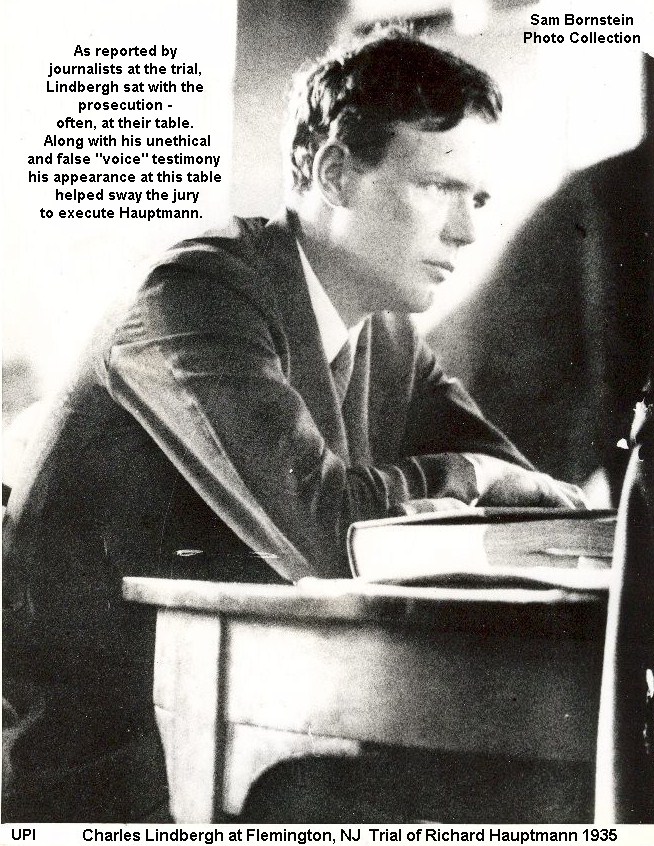
And, yes, Lindbergh DID sit at the Prosecution table. Much controversy has developed between Verdict Defenders and Verdict Denouncers regarding Lindbergh's seating arrangements in the Flemington Court Room. Many people claim it isn't true that Lindbergh sat with Prosecutors but here is the information compiled by researcher, Michael Melsky, dealing with that outrageously prejudicial situation.
Posted to the LKH Public Forum
Yes, Lindbergh did sit at the
Prosecutor's Table at times. Ahlgren
& Monier were right.
Liberty Magazine 4-16-38 page 55:
(omit)
When the trial so often referred to as "the trial of the century"
opened in the stuffy, crowded, disorderly little courtroom at Flemington, there
were seated at the state's table David Wilentz, Attorney General of New Jersey;
Assistant Attorneys General Richard Stockton, Robert Peacock, and Joseph Lanigan;
Special Assistant Attorney General George K. Large; Prosecutor of the Pleas
Anthony M. Hauck of Hunterdon County; and, not a member of the legal staff but a
vital factor as far as the jury was concerned, the father of the murdered child,
Colonel Lindbergh.
Before the trial the New York Journal, one of the bitterest
of the anti-Hauptmann press, called attention to the fact that Colonel Lindbergh
had been at the state's counsel table during the trial of John Hughes
Curtis,
but "it was not assumed that any such unusual privilege would be granted to
him during the Hauptmann trial." Yet Lindbergh was there, obviously to awe
that Hunterdon County jury...
Reilly to Macfadden Letter, 5-5-38:
(omit)
I was not informed that Colonel Lindbergh would be permitted to sit at the table
until a few minutes before Court opened on the opening day.
(omit)
During the noon recess, I took up the question of Colonel Lindbergh's presence
at the table, but was overruled by my other counsel.
Fisher to Hoffman Letter, 9-3-38:
(omit)
...referring to Colonel Lindbergh at counsel table....(omit)...Reilly never
offered any objection to Colonel Lindbergh being at counsel table at any time.
Other counsel never over-ruled Reilly on this proposition, nor for that matter,
on any other proposition
Sam Bornstein submitted the following article to the LKH Forum
For
Verdict Defenders like me Sep 22
2002
Richard A. Knight, Lawyer (graduate of the
University of Texas and Harvard Law School), writing in the Forum and Century,
January, 1936:
“Last Spring, in the midst of a mob of peanut eaters in an atmosphere
suggestive of a cockfight rather than of a court, Hauptmann was tried and found
guilty, allegedly on circumstantial evidence, not of kidnaping nor of extortion
but of murder. Now kidnaping is one thing, and extortion is another, and murder,
quite distinctly, is yet a third. And in the record compiled at that trial there
is no more evidence that the man is guilty of murder than there is that you or I
am.
The fundamental requirement for the sufficiency of circumstantial evidence to
sustain a conviction for murder or indeed any other crime is that it must be so
strong as to exclude all other hypotheses than that of the accused’s guilt of
the crime as charged. Any lawyer will confirm to you that in the whole of
the criminal law there is no more elementary or perfectly settled rule than
this. And there is nothing esoteric, nothing complicated about it; it is
precisely as simple as it sounds. With it clearly in our minds, each of us at
once becomes as well qualified to pass upon the propriety of the affirmance of
the conviction by the Appellate Court as the Supreme Court of the United States
is.
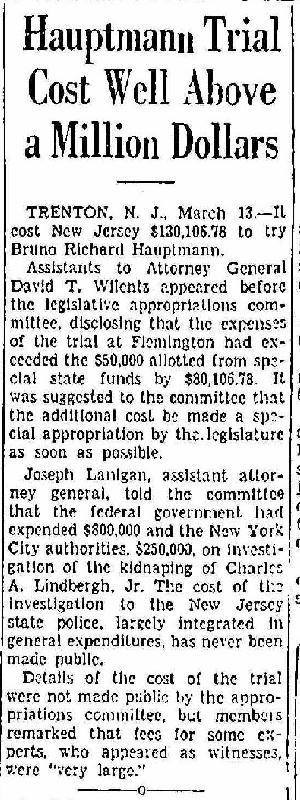
Now, specifically Hauptmann was charged with murder by virtue of having, while
perpetrating a burglary, accidentally killed the baby on the Lindbergh
premises – a technical kind of murder, obviously, since no murderous
intent is required by it to be established. In accordance, then, with the rule I
have just recited, for his conviction to have been properly sustained,
circumstantial evidence not merely of the child’s death but of its accidental
death on the premises must not only have been introduced into the record
but must have been so strong as to exclude the possibility of any other
hypothesis. This is the exact and inarguable essence of the whole case.
Unless in that gross ton of evidence which was sent up from the trial court
these two facts were overwhelmingly established, not a pound of it could
properly avail to sustain the conviction, and all the ingenious deductions from
the wood of the ladder and from the handwriting of the ransom notes and all the
testimony respecting the passage of the ransom money and all the admissions
wrung from Hauptmann himself respecting the viciousness of his own past and
indeed anything and everything else in the whole record was and is wholly
immaterial. All those things may conclusively prove the crime of kidnapping
or that of extortion. But it is with the crime of murder and murder only
that the Appellate Court was concerned – that accidental killing in the course
of the commission of that burglary on those premises – it had to find
overwhelming evidence of that.
Well, every gum chewer in the subway knows that there is no such evidence in the
record.”
Attorney Michael Donner replied to Sam
Bornstein
Re: For Verdict Defenders like me
Fri Sep 27 2002
The writer makes an excellent point, and he does it with some literary flair.
His "peanut munchers" put me in mind of Sylvia Plath's famous line
about the "peanut-crunching crowd," and since this guy wrote before
Plath, I guess the credit for the line should go to him.
He makes the same point that I made months ago on this board; namely, that
(regardless of Hauptmann's factual guilt or innocence) the circumstantial
evidence adduced in the case was clearly insufficient to support the conviction
for felony murder; I believe, as I have stated before, it rose only to the level
of second degree murder. To prove felony murder, the prosecution had to prove
not only that Huaptmann delivered the fatal blow. They had two other required
elements to prove; (a) that he formed the intent to steal the child's
sleepingsuit BEFORE (not AFTER) he broke and entered into the house (i.e., the
factual requirement to prove a burglary, the felonious condition precedent
required to elevate the subsequent killing to felony murder - remember, murder
during the commission of a kidnapping was not sufficient - it had to be murder
in the commission of a burglary); and (b) that the killing occurred DURING THE
COMMISSION OF THE BURGLARY. The prosecution had to prove BOTH of those facts
before Hauptmann's conviction could rise from second degree (i.e., non-capital)
murder to felony (i.e., capital) murder.
Is it possible to form a hypothesis of innocence that Hauptmann had no intent to
steal the child's sleepingsuit until AFTER he broke in? Or that he never formed
the intent to steal the child's sleepingsuit at all - that it was merely
incidental to the kidnapping - in other words, it simply came along with the
child with Hauptmann's never having formed the intent to steal it? If the answer
to EITHER of these questions is YES, then Hauptmann is not guilty of felony
murder.
Let's give the prosecution the benefit of the doubt and say, OK, there was
sufficient evidence from which the jury could have found that Hauptmann formed
the proper intent. Where is the evidence that Hauptmann killed the child during
the commission of the burglary? There was no blood found in the bed - is it
possible to form a hypothesis from this lack of evidence that Hauptmann struck
the fatal blow elsewhere, when he was miles from the house and the kidnapping
(i.e., the actual spiriting away) was a completed act. If that were the case,
then Hauptmann is guilty of only second degree murder.
One of the things I find legally troubling about this case (and I've mentioned
this before on this board, so those of you that remember this boring
dissertation, please bear with me), is that the defense never pressed for what
called a "lesser included offense" instruction. In other words, when a
defendant is indicted for "Crime X", the evidence can show that the
defendant is actually guilty of only "Crime Y",where Crime Y contains
some, but not all, of the elements of crime X. For example, suppose to prove
first degree murder the state has to prove elements A (a killing), B (with
malice), and C (with premediation). The evidence clearly shows A and B, but it
is not so clear with respect to C. The defendant is constitutionally entitled to
the "lesser included offense" instruction - that is: "Ladies and
gentlement of the jury, if the prosecution has proven A and B beyond a
reasonable doubt, but not C, then you shall find the defendant guilty of second
degree murder." Oftentimes, defendants who insist that "I didn't do
it" will insist on an all or nothing instruction - i.e., "either find
me guilty of first degree murder or acquit me." I have often postulated
here how Hauptmann's insistence that he had NOTHING to do with the crime, when
overwhelming evidence showed he was somehow involved, was the MAIN factor that
cost him his life. It prevented his lawyers from raising reasonable doubt about
SOME elements of the felony murder charge, thus lowering the degree of his
culpability and saving his life. It prevented his lawyers from arguing these
fine legal points to the court.
Debate
John Liston
felony murder
Tue Jun 26 2001
felony murder is charged every day all over this country--you didn't believe that recent hokum posted here that it was a thing of the past did you ?
Nancy
Felony-murder is still in use
Wed Jun 27 2001
The felony-murder doctrine has always been controversial but is still in use. At the time of the Lindbergh kidnapping my sources say that kidnapping was not one of the felonies that would support a charge a felony-murder and the possibility of the death sentence. This is why BRH was charged with burglary in order to use the felony-murder charge.
EMM
I'm not sure I understand...
Wed Jun 27 2001
how they got away with that. If you went somewhere with a ransom note already written out, how would burglary factor in??? That, to me, would show that the intent was to kidnap, not to rob.
Siglinde.
Re: I'm not sure I understand...
Wed Jun 27 11:02:46 2001
Hauptmann was charged with stealing the sleeping suit to bring in the burglary factor.
Nancy
I agree!
Wed Jun 27 2001
I agree and many legal scholars do too. That's the point I was trying to make in my earlier post regarding felony-murder use in the Hauptmann trial. Bascially the prosecution was over-reaching, using the felony-murder law to get a death penalty conviction in this case. Murder in the course of kidnapping would not have qualified BRH for felony murder. Kidnapping alone would not have gotten the death penalty which was what the prosectuion wanted. My guess is that the prosecution figured that if they got the threat of death, they could force BRH to confess, commute his sentence to life, and then go after others in the "gang". They twisted the law in the process and the conviction should have been overturned on appeal, giving BRH a new trial. But the political stakes for doing so were just too high.
Mike A.
Hauptmann : Lucifer or Scapegoat?
Fri Apr 20 21:59:28 2001
The prosecution's case against Bruno Richard Hauptmann for the kidnapping and
murder of the Lindbergh baby was full of flaws and inconsistancies:
1.) Police found fingerprints on the kidnap ladder and on four of the ransom
notes. Not ONE of these matched Hauptmann's fingerprints, and most remain
completly unidentified to this day.
2.)The plaster cast of Cemetary John's shoeprint made by BI agent Sisk was to
small to have been made by Hauptmann's foot.
3.)The prosecution's handwriting experts all admitted, under direct and cross
examination that there were many differences between the ransom note handwriting
and Hauptmann's conceded writings. They attributed this to the defendant using a
"disguised handwriting".
4.)Fingerprint expert Dr. Hudson testified at the trial that ther was only one
nail hole in Rail 16 when he examined it on March 13, 1932, and after the trial
Gov. Hoffman produced a March
2, 1932 photograph of rail 16 with no nail holes in it. Without these holes, ther could be no link between rail 16 and the nail
holes in the joists in the defendant's attic.
The half board in the defendants attic that rail 16 supposedly came from had
seven knots in it wheras rail 16 had only three knots. Moreover, the planed rail
16 was actually one-sixteenth of an inch THICKER than the unplaned attic board,
making a match between the two extremely unlikely.
5.)The two eyewitnesses who identified Hauptmann as being Cemetary John both
identified men who looked nothing like Hauptmann as being John prior to the
defendant's arrest.
The two eyewitnesses who identified Hauptmann as a man lurking near the
Lindbergh estate at the time of the kidnapping had both told police previously
that they had not seen any suspicious characters that day.
6.)A newsman, Tom Cassidy, publically boasted of having written Dr. Condon's
name address and phone number on a board in Hauptmann's closet.
The Lindbergh Law made extradition proceedings no longer necessary for the crime of kidnapping murder. The law was approved by Congress on June 22, 1932 and on May 18, 1933 FDR signed into effect a harsher Lindbergh Law which made the sending of a kidnap/ransom note across state lines a federal offense. It also permitted the death penalty for kidnapers who took their victims from one state to another and failed to return them unharmed.
Another law was passed because of this trial. The American Bar Association passed Cannon 35 which banned all still and motion cameras and microphones from courtrooms. That law was established because of the constant noise of flashes and reporters whispering throughout the trial. Many believed Hauptmann did not receive a fair trial because of the media. When he was arrested, headlines read: "Lindbergh Kidnaper Arrested." He was presumed guilty upon arrest. Reporters fought to be the first to bring fresh news. Wires transmitted daily court transcripts all around the world. The entire trial added up to 55,000 transmitted words. And much of it was simply made up for the sake of "fresh news."

Scott Berg and the 'Even If" Theory of Guilt
Scott Berg claims that "just because there were improprieties in the trial it does not mean Hauptmann wasn't guilty." In his biography of Lindbergh he claims that Hauptmann was guilty. He seems to have invented a new legal theory - the "even if" theory of guilt. Without explaining WHY he thinks Hauptmann was guilty; without giving any basis for his defense of that verdict he sums it all up like this:
"In the 60 years since the "Lindbergh Case," countless theories suggesting Hauptmann's innocence have surfaced. There is room for such hypotheses because there was never any evidence placing Hauptmann on the Lindbergh property, either outside on the ladder or inside the baby's bedroom. But even if several witnesses had been coerced or had convinced themselves that Hauptmann was guilty and worth perjuring themselves for, even if evidence had been faked or tampered with, even if law enforcement agencies had botched their work, even if all the expert testimony from both sides nullified each other, even if Richard Hauptmann had been a more sympathetic witness, more at ease with the English language and less a target for a hostile press corps, even if the court had been biased against him - there remained a veritable mountain of undisputed evidence against him, a man so chronically secretive that his own wife declared she did not even know his first name was Bruno until the tabloids smeared it across their front pages. "Few today deny that the trial was unfair," wrote attorney and law professor Alan M Dershowitz in 1988, - "not only by current standards, but by the far less rigorous standards of the 1930s. But many who acknowledge the trial's unfairness insist that Hauptmann was plainly guilty."
Where is the logic in what Berg is saying here? Doesn't "reasonable doubt" mean the defendant doesn't get executed?
Especially deceptive is Berg's use of Alan Dershowitz' statement - taken out of context from something that may or may not have shown that the Harvard law professor was in complete agreement with him. All Dershowitz is saying is that lots of people, in spite of the trial's unfairness believed he was guilty.
Alan Dershowitz has referred to this trial as the Lynching of the Century.
And more importantly, after all the unfairness that Berg admits to is removed, what is left to kill a man for? The defendant never told his wife his real German name? Is that why Berg condemns Hauptmann as a baby-killer - because he lied to his wife?
Hauptmann's "chair" is now on view at the W Trenton State Police Museum.
From Preservation Online, the online magazine of the National Trust for Historic Preservation
www.preservationonline.org
Lindbergh Trial's Courthouse
Restored
![]()
![]()
Story by Margaret Foster / Sept. 28, 2005
![]()
The 1828 courthouse where Bruno Hauptmann was convicted in 1935 of kidnapping the Lindbergh baby has been restored, inside and out.
Located in Flemington, N.J., the Greek revival building opened to the public for tours last weekend. Next month, the Hunterdon County Courthouse will resume weekly re-enactments of the Hauptmann trial, which have been on hold since March 2004, when the $4.2 million interior project began. The stucco building's $1.1 million exterior restoration was completed five years ago.
"We removed a lot of the 1950s renovations," says Frank Bell, architect for Hunterdon County, which funded the project, with the help of $1.5 million in state grants.
Workers repainted and re-plastered the courthouse's rooms, adding period fixtures and re-installing the original 1880s judge's benches that had been stored in the building.
"The stuff that we couldn’t find was so well documented with photographs that we could re-create it," says John Hatch, partner at Clarke Caton Hintz. "It's pretty exciting seeing the photographs and then stepping into the room, especially when you knew what had been done to the space in the 1950s."
Now handicapped-accessible, the building will be used as offices and for civil trials. The attached jail, which is being repainted, will be completed and open to the public within the next two months, Bell says.
Hauptmann lived in the courthouse's jail during the six-week trial, which Charles and Anne Lindbergh, along with hundreds of reporters, attended. Their son, Charles A. Lindbergh Jr., was 20 months old when he was kidnapped from their estate in nearby Hopewell, N.J. Months later, the child was found dead with a fractured skull.
![]() New!
since April 2020 - YOU TUBE LKH Channel
New!
since April 2020 - YOU TUBE LKH Channel
![]() Ronelle
Delmont's Lindbergh
Kidnapping Hoax Forum
Ronelle
Delmont's Lindbergh
Kidnapping Hoax Forum
Ronelle@LindberghKidnappingHoax.com
![]() Michael
Melsky's
Lindbergh Kidnapping Discussion Board
Michael
Melsky's
Lindbergh Kidnapping Discussion Board
Directory Books Search Forum Home Transcript Sources
© Copyright Lindbergh Kidnapping Hoax 1998 - 2020